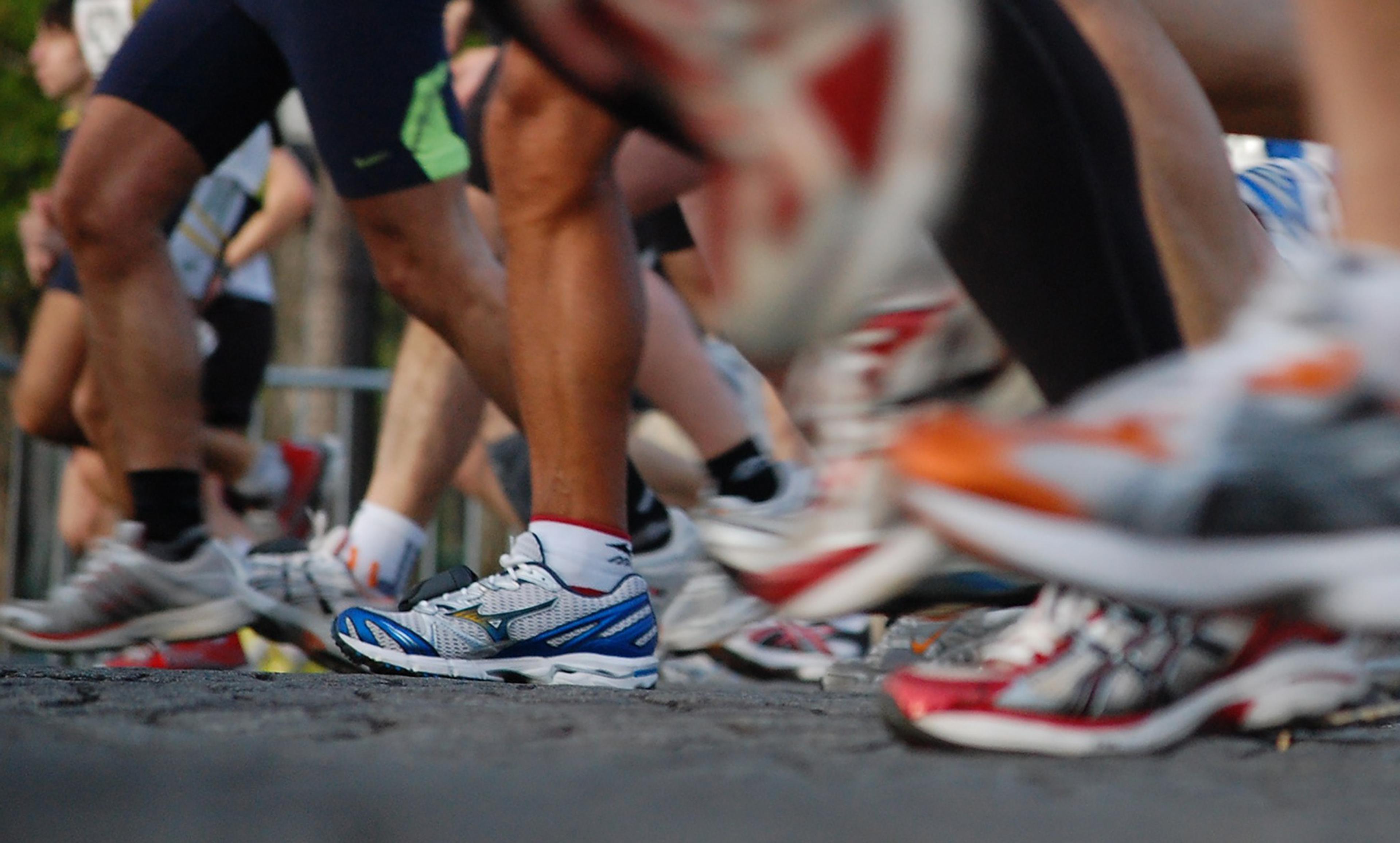
Josiah Mackenzie/Flickr
Participation in sports is a highly visible aspect of 21st-century life, with a normative dimension. Sport benefits health, encourages self-discipline, and develops character and teamwork. The positive physiological and psychological effects of sport and an active lifestyle are scientifically well-known: improved cardiorespiratory and muscular fitness, lower risk of osteoporosis and depression, and an increased life expectancy. Based on all this good news, one might wonder whether there is any downside.
‘Sports addiction’ sounds paradoxical, because we usually reserve the word ‘addiction’ for things that are recognisably bad for us, such as illicit-drug use or alcoholism, but there really is a sense in which you can become addicted to exercise. Even modest athletes can relate to the famous ‘high’ after exercising, triggered by the release of ‘happiness hormones’ such as dopamine and endorphins, which have mood-altering effects. These effects, like those produced by illicit drugs and alcohol, can be habit-forming. As in any addiction, ‘highs’ are important for getting hooked, but the development of an addiction depends on many external factors, too. Sports addiction is not taken seriously by everyone, however: ‘there are worse things to be addicted to’ mockers suggest, as if the term ‘addiction’ is only a metaphor. Sports addiction is, however, real, non-metaphorical, and harmful.
Sport addicts share many symptoms with other sorts of addicts. They harm their bodies: this is because they do not give them the chance of recovering from working out, often because of the intensity, duration and frequency of their training sessions. Sport becomes so much an obsession that such people don’t take time to recover from injuries. Incidence of heart attacks and osteoporosis increase at high levels of exertion, so sports addicts can put themselves at serious risk of harm.
But it is not just a question of physical damage: sports addicts suffer psychological damage too: they become dependent on training for feeling good, and life away from training becomes dull. They can also develop tolerance to the ‘high’, and so need more and more exercise to get the same result. When not exercising, they experience withdrawal effects, depression and anxiety. Sports addiction has negative social effects, too: addicts cancel meetings because they prefer training over friends, family and work, or are mentally not present when they are with other people, so preoccupied are they with mentally preparing for that next training session high.
The complexity of sports addiction lies in the fact that a reasonable amount of exercise and sport is good, but too much can be very harmful indeed. However, such harmful effects are not understood nor widely recognised, as the social perception of sports addiction differs significantly from other types of addiction.
But is it as simple as this? Is sports addiction always something to be ashamed of, something to be treated or overcome? In other areas of physical prowess, significant harm is tolerated for the sake of an outstanding outcome, and might even be the price paid for excellence. Many ballet dancers have ruined feet, for example; and many musicians have injuries as a result of over-practice or repetition in performance. Similarly, many professional boxers suffer from brain damage through repeated sparring, and athletes, footballers and rugby players have been badly injured during high-level sports training.
But these are highly talented people capable of beautiful, exciting and sometimes dangerous things, which ordinary people will never be able to do. Are all of them addicts? Probably not. However, many of them tread a fine line between devotion and addiction, and illustrate how obsessive devotion, beyond ordinary levels, has the double potential both for great achievement and for significant self-harm. If we value the achievement, perhaps we will have to accept that there will be some collateral damage along the way.





